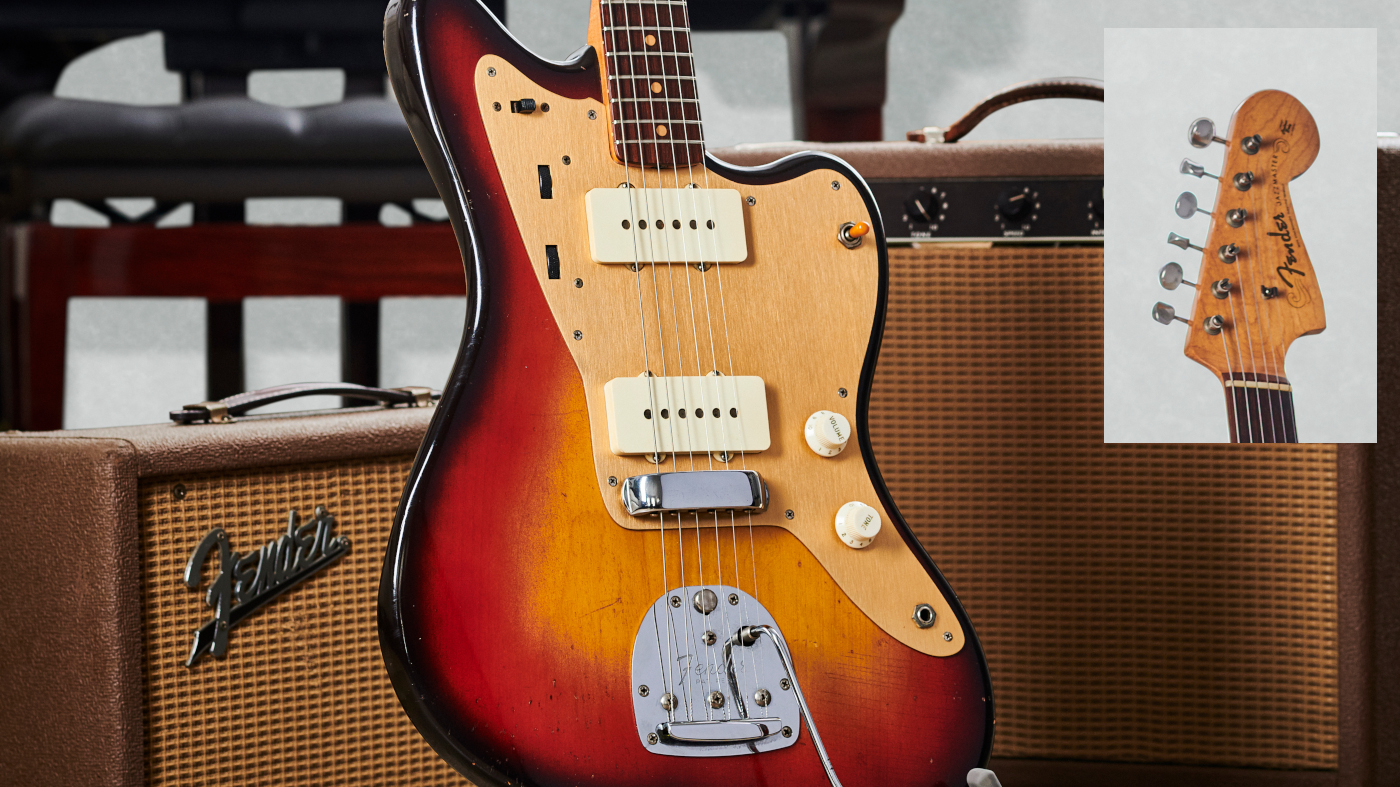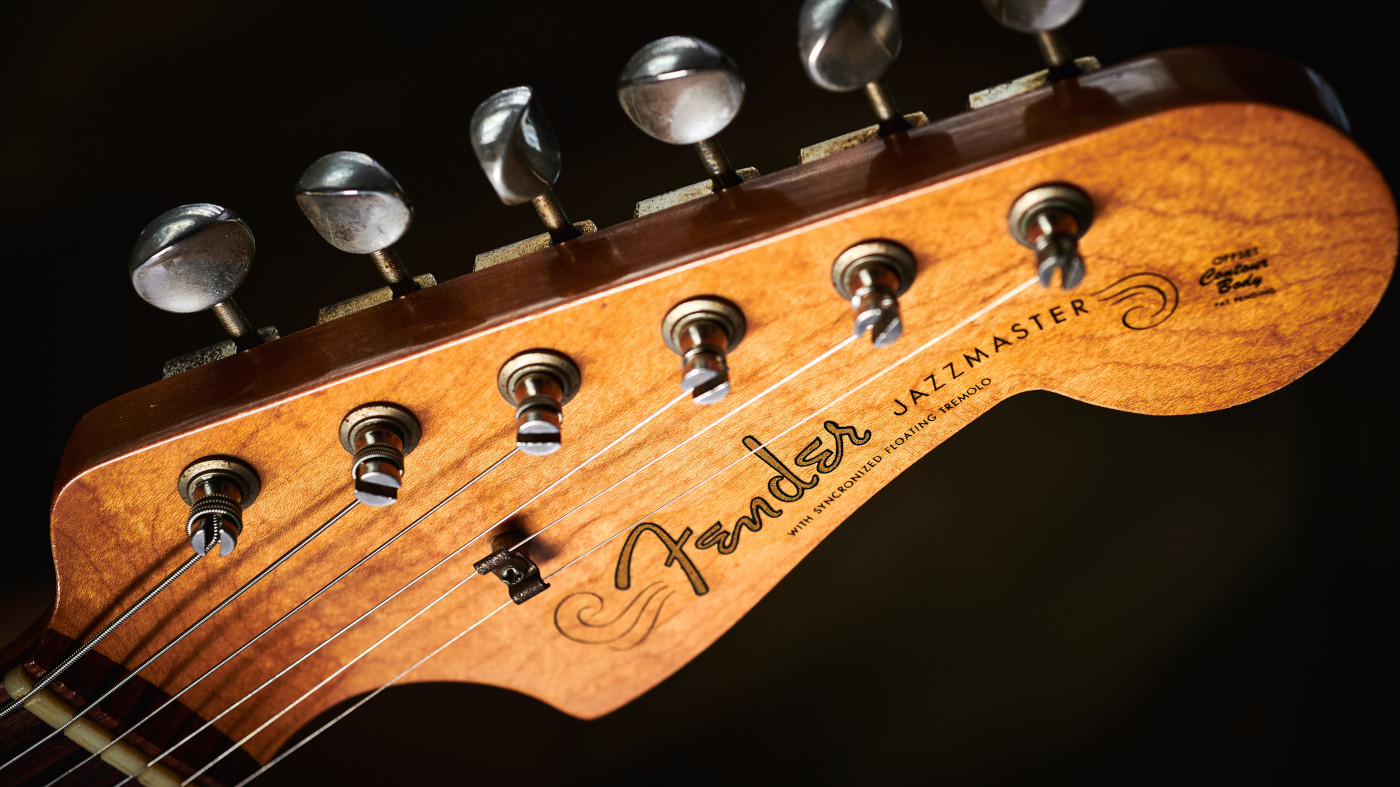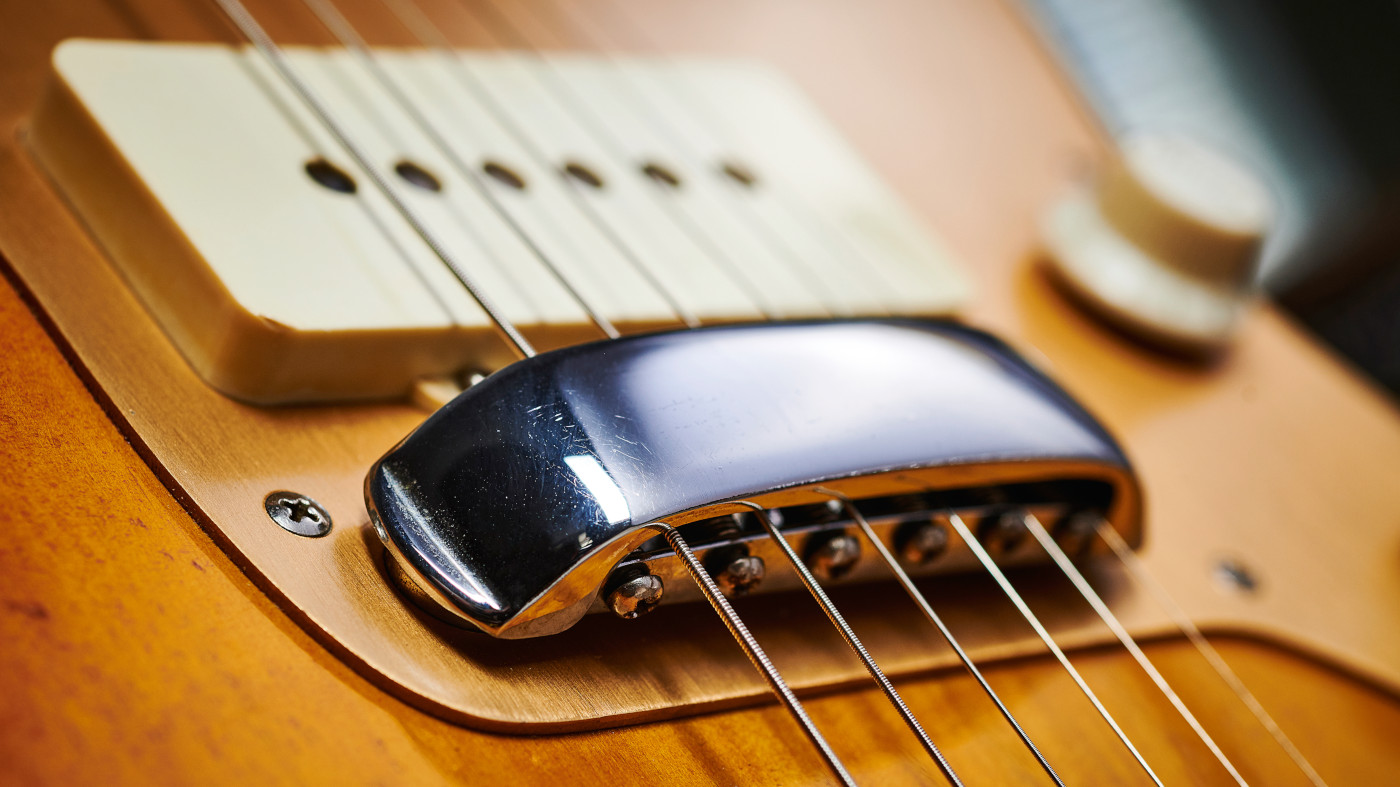Classic gear: Fender Jazzmaster
Fender’s offset solidbody makes a splash in surf and new wave

By the late 50s Fender had established itself as a force to be reckoned with. Often seen in the hands of guitarists across a range of genres from blues and country to rock ’n’ roll, the company’s Telecaster (introduced as the Broadcaster in 1950) and Stratocaster (released in 1954) were proving popular, although they were seldom adopted among jazz players.
The booming electric jazz guitar scene of the 1950s was dominated by Gibson’s ES (Electric Spanish) series, with its flagship Super 400CES and L-5CES electric archtops setting formidably high standards. It was an area of the market Fender was keen to tap into, but rather than trying to beat Gibson at its own game by building electric semi/hollowbody instruments, it decided to take the equally ambitious tack of developing an all-new electric solidbody design. Aimed at jazz guitarists, the Jazzmaster model was prototyped during 1957 and then introduced in the following year at the top of Fender’s price list.
The Jazzmaster was so different to the likes of Gibson and Epiphone’s long-established benchmark designs that it never gained mass appeal in the jazz world
An early advertisment for the guitar reads: “The revolutionary offset waist body design offers the ultimate in playing comfort... playing is effortless,” highlighting the sleek contours of Fender’s new solidbody in an attempt to steer the market’s attention away from its competitors’ bulkier and old-fashioned archtops.
Untried and untested, however, the Jazzmaster was so different to the likes of Gibson and Epiphone’s long-established benchmark designs that it never gained mass appeal in the jazz world.
Perhaps the only feature that appeared to be borrowed from the competition was the Jazzmaster’s rosewood fingerboard - a first for Fender. It was a striking new addition that didn’t appear to wear as noticeably as Fender’s existing lacquered, fretted maple necks and, by 1959, rosewood fretboards had become standard on all models across the range, including the Esquire, Telecaster, Stratocaster and Precision bass.
Finished in Fender’s new Three-Tone Sunburst as standard, the Jazzmaster came equipped with a unique ‘Tremolo’ system that would also later appear on the similarly ‘offset’ body Jaguar (released in 1962). Consisting of a spring-loaded tailpiece and floating bridge, this mechanism has a notably smooth and gentle action, and when used with the relatively heavier gauges of string that were popular at the time of its design (0.012-gauge and above), it proves remarkably stable.
Bob Bogle, Tom Verlaine, Elvis Costello, Robert Smith, Kevin Shields and J Mascis are all known to favour the Jazzmaster
With the typically warmer tones of the jazz guitarist in mind and to further distinguish the Jazzmaster from its predecessors, Fender developed a new dual set of single-coil pickups with wide, flat coils that produced a thicker, more rounded sound. A two-position slide switch located on the upper bass bout enables a ‘preset’ selection of either the single/front pickup ‘rhythm’ circuit or the dual-pickup ‘lead’ circuit. Two roller pots control the volume and tone of the rhythm circuit, while a regular three-way pickup selector switch along with standard tone and volume knobs are assigned to the lead circuit.
Get the MusicRadar Newsletter
Want all the hottest music and gear news, reviews, deals, features and more, direct to your inbox? Sign up here.
Despite being largely ignored by jazz guitarists following its arrival, the Jazzmaster found a much wider stylistic appeal than its name implies. Bob Bogle, Tom Verlaine, Elvis Costello, Robert Smith, Kevin Shields and J Mascis are all known to favour the Jazzmaster. Even Jimi Hendrix was known to strap one on from time to time (upside down, of course!).
1959 Fender Jazzmaster
1. Serial number
Five-digit number (typically between 34000-43000) stamped into neck plate
2. Headstock
Flared Stratocaster-style profile; gold ‘spaghetti’ Fender logo; nitrocellulose clearcoat finish

3. Body
Two-piece solid alder; offset profile; rib and forearm contours; Three-Tone Sunburst nitrocellulose finish
4. Pickups
Two wide/flat single-coil pickups; two-position lead/ rhythm circuit slide switch; 1meg-ohms volume and 50kohms tone roller pots (rhythm circuit); three-way pickup selector toggle switch, volume, tone 1meg- ohms pots (lead circuit); brass tray cavity shielding
5. Hardware
Gold-coloured aluminium pickguard; front-loading jack socket; single-line Kluson Deluxe tuners; butterfly string tree and spacer; chrome-plated top-loading spring-loaded tailpiece with lock switch and floating bridge ‘Tremolo’; chrome- plated bridge cover; chrome- plated ‘Tremolo’ arm

6. Plastics
ABS pickup covers; ABS volume and tone knobs (lead circuit); rhythm/ lead circuit switch grip; three-way pickup selector switch tip (lead circuit); ‘Tremolo’ arm tip
7. Neck
251⁄2-inch scale length; one- piece solid maple; Brazilian rosewood ‘slab’ ’board; 21 frets; ‘clay’ dot markers; bone nut; 71⁄4-inch radius
The evolution of the Fender Jazzmaster
- 1958 Fender Jazzmaster released; gold‐coloured aluminium pickguard
- 1959 4‐layer (w/b/w/tortoiseshell) or 3‐layer (w/b/w) celluloid pickguard
- 1962 ‘Curved’ Brazilian rosewood fingerboards replace ‘slab’ type
- 1963 Thinner ‘veneer’ Brazilian rosewood fingerboards
- 1964 Headstock decal changes from ‘spaghetti’ to ‘transition’ Fender logo
- 1965 Bound fretboard; enlarged headstock; metal cap skirt knobs replace Stratocaster‐style knobs
- 1966 Pearloid block fretboard markers replace dot inlays
- 1967 Maple fingerboard with black block fretboard markers optional; black CBS Fender logo
- 1968 Polyester finish introduced
- 1979 Last appeared in Fender price list at $740 (omitted in 1980 price list)
Rod Brakes is a music journalist with an expertise in guitars. Having spent many years at the coalface as a guitar dealer and tech, Rod's more recent work as a writer covering artists, industry pros and gear includes contributions for leading publications and websites such as Guitarist, Total Guitar, Guitar World, Guitar Player and MusicRadar in addition to specialist music books, blogs and social media. He is also a lifelong musician.
“Its mission is simple: unleash the power of any amplifier or line-level source without compromise”: Two Notes promises a “watershed” in tube amp control with the Torpedo Reload II
MusicRadar deals of the week: Enjoy a mind-blowing $600 off a full-fat Gibson Les Paul, £500 off Kirk Hammett's Epiphone Greeny, and so much more












